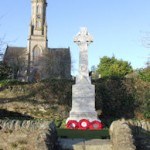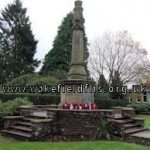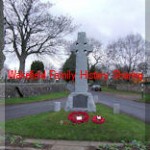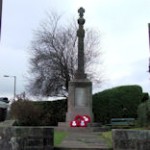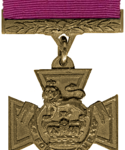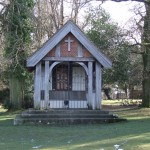On many of the large memorials there is an order in which the names and Regiments are listed – I din’t know either until a fellow member of the NVA (Normandy Veterans Assoc.) passed on the information.
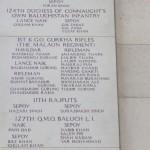
Take for example you have a relative on the Thiepval Memorial – he is one of over 72,000 other casualties who were KIA and their final resting place is not known, being only remembered on a memorial far from home.
Edmund Hilton Dadd, M.C., Capt, Royal Welsh Fusiliers died 1916; Edward Davy Pain, Capt., Somerset Light Infantry and Edward Aubrey Jackson, Rifleman, KRRC. Which Regiment is listed first, do you know ?
Firstly, you need to understand that the Command Staff are always first, mostly General, Colonels etc., then the regiments, the regiments that traditionally guarded the King, so we have the Life Guards. Followed by the Dragoon, Hussars and Lancers, then the Royal Horse and Field Artillery, the Guards in their various forms. With the other regiments following on, again in a strict order.
Back to our young men who are on the Thiepval Memorial – ~The Somersetshire LI (Prince Albert’s) Regt., is first being 13th after the Guards and Household Regiments who are not numbered. The Royal Welsh Fusiliers are 23rd on the list and the King’s Royal Rifle Corps., are following on in 60th position.
It dosn’t work out that if your regiment had a regal connection i.e. King’s, Prince or Princess in their name. Putting it simply, as I like to do most of the time, the more traditionally connected to looking after the monarch the higher up the list you are.
Saying that, it is still confusing and sometimes you are best looking straight at a list of the regiments. The Corps of Royal Engineers is listed after the Royal Horse and Field Artillery, but before the Grenadier Guards, Scots, Irish and Welsh Guards. The listings don’t work on how new the regiments were i.e. the Welsh Guards were only formed in 1915. The Guards Machine Gun Regiment raised in 1917 is listed after the Welsh Guards but the Machien Gun Corps raised in 1916 follows on near the end of the list.
Before you get totally confused and end up at a memorial looking for your great uncle take a look at the list, it may help shed a smattering of light on the subject.
Oh! before I forget, there is also within the Regimental order an order for the Commonwealth Forces – have fun !!
The Order of Regiments can be found by clicking here
Like this:
Like Loading...
